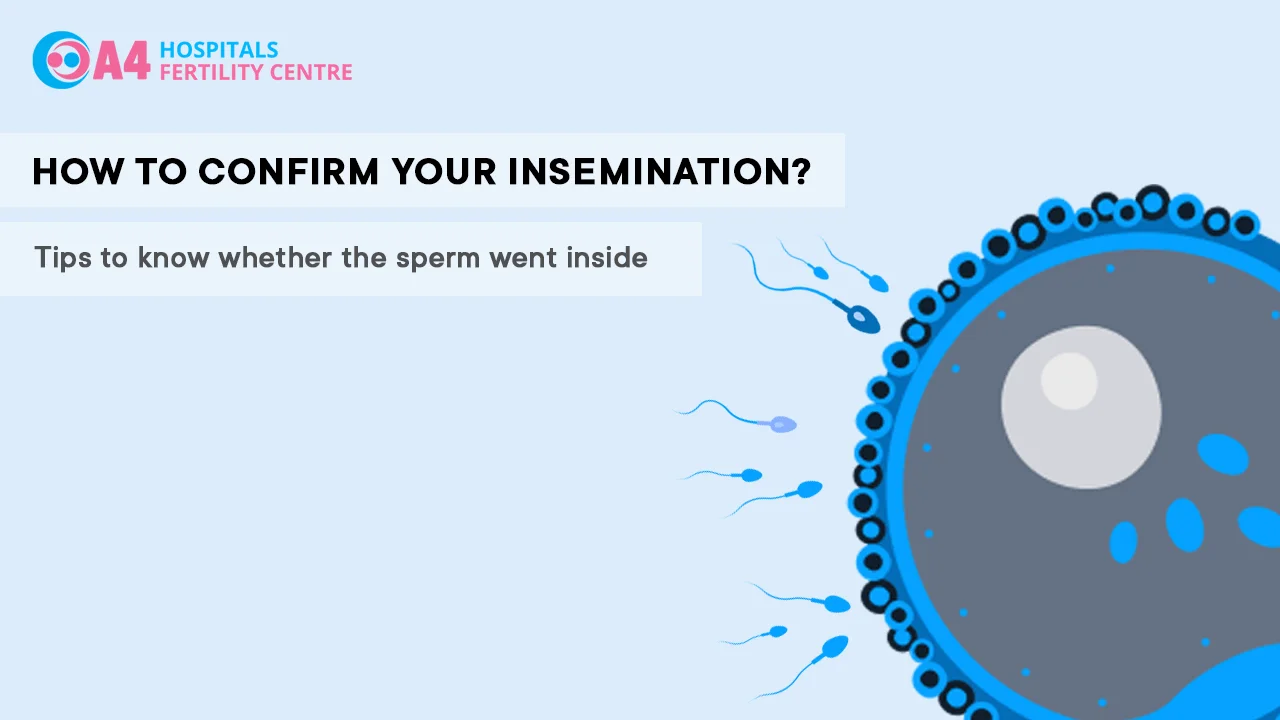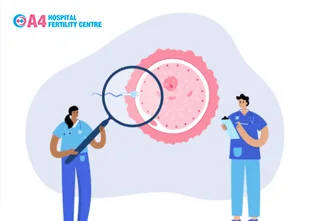
Dr. Aruna Ashok MBBS, MS OG, DNB OG
- Clinical Director

Insemination is a commonly used fertility treatment that offers hope to individuals and couples on their journey to parenthood. However, one question that often arises is how to confirm whether the sperm has successfully reached its intended destination. Understanding whether insemination was successful can provide reassurance and valuable insights into one's fertility journey. In this blog, we will explore helpful tips to determine whether the sperm has been successfully inseminated and provide guidance on confirming the procedure's outcome. While it may be challenging to definitively confirm insemination without medical intervention, there are signs, sensations, and follow-up procedures that can offer valuable indications. Open communication with healthcare providers, paying attention to post-insemination signs, and following up with appropriate procedures can provide individuals with the information they need to understand the success of their insemination and take the next steps on their path to achieving pregnancy.


Insemination, also known as artificial insemination, is a fertility treatment that involves the introduction of sperm into the reproductive tract to increase the chances of pregnancy. It is a widely used procedure that can be beneficial for individuals and couples facing fertility challenges.
There are different methods of insemination, including intrauterine insemination (IUI) and intracervical insemination (ICI). During an IUI procedure, the prepared sperm is carefully inserted directly into the uterus using a thin catheter. This method allows the sperm to bypass the cervix and have a higher chance of reaching the fallopian tubes where fertilization occurs. In contrast, ICI involves placing the prepared sperm near the cervix, allowing it to swim naturally into the uterus and fallopian tubes.
The goal of insemination is to optimize the chances of fertilization by increasing the concentration and quality of sperm in the reproductive tract. Before the procedure, the sperm is typically washed and processed to remove any potential barriers to fertilization, such as non-motile sperm, debris, or seminal fluid. This preparation helps enhance the sperm's viability and improves the likelihood of successful fertilization.
Insemination is often recommended in cases of unexplained infertility, cervical factor infertility, low sperm count or motility, or the need for donor sperm. It is a less invasive and more cost-effective option compared to other fertility treatments such as in vitro fertilization (IVF).
To ensure the best possible outcome, insemination is typically performed around the time of ovulation. Monitoring the menstrual cycle and tracking ovulation through methods such as ultrasound scans, ovulation predictor kits, or hormonal assessments can help determine the optimal timing for insemination.
The role of the healthcare provider is crucial in the process of insemination. They possess the expertise and knowledge necessary to perform the procedure safely and effectively. Healthcare providers play a vital role in accurately assessing the individual or couple's fertility status, determining the most appropriate method of insemination, and providing guidance throughout the treatment process. They carefully insert the prepared sperm into the appropriate location, whether it is the uterus during intrauterine insemination (IUI) or near the cervix during intracervical insemination (ICI). By entrusting their care to a qualified healthcare provider, individuals and couples can have confidence in the expertise and experience that will increase their chances of a successful insemination and ultimately achieve their goal of starting or expanding their family.
While it may be challenging to confirm insemination definitively without medical intervention, there are some signs and sensations that individuals can pay attention to:
Some individuals may experience mild cramping or a sensation similar to menstrual cramps after insemination. This can be an indication that the sperm has been introduced into the reproductive tract.
Light spotting or vaginal discharge may occur after insemination. This can be a result of the procedure itself or a reaction to the sperm.
Observing changes in cervical mucus consistency and quality can provide insights into the impact of insemination. Following insemination, cervical mucus may become more abundant and have a stretchy, egg-white-like texture.
Follow-up procedures are essential in confirming the outcome of insemination and assessing the potential for pregnancy. These procedures may include ultrasound scans, blood tests, or home pregnancy tests. Ultrasound scans can detect early signs of pregnancy, such as the presence of a gestational sac or fetal heartbeat. Blood tests can measure the levels of pregnancy hormones, such as human chorionic gonadotropin (hCG), to provide further confirmation. Home pregnancy tests can be used to detect the presence of hCG in urine, providing an initial indication of pregnancy. These follow-up procedures, conducted at the appropriate time after insemination, provide valuable information and guide individuals and couples in their fertility journey.
Open and honest communication with your healthcare provider is crucial throughout the insemination process. They can guide you through the post-insemination period, explain what to expect, and address any concerns or questions you may have. Regular follow-up appointments and discussions with your healthcare provider will help you stay informed and receive the necessary guidance. But don't expect them to give you a pat on the back and a 'good job' when you're done!
Confirming insemination can be challenging without medical intervention, but paying attention to signs, sensations, and follow-up procedures can provide valuable insights. Remember, the expertise of healthcare providers and open communication are key factors in ensuring a successful insemination process. If you have concerns or questions regarding your insemination, reach out to your healthcare provider, as they will provide personalized guidance based on your specific situation. This process is like a puzzle. You need to have the right pieces in place – the expertise of healthcare providers and open communication – in order to achieve a successful outcome. Without these elements, the insemination process may not be successful.